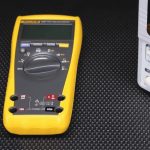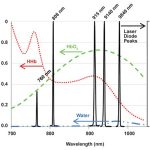 Introduction:
Introduction:
The blower motor resistor is an essential component in a vehicle’s heating, ventilation, and air conditioning (HVAC) system. It controls the speed of the blower fan, allowing you to adjust the airflow in your car. If the blower fan stops working or operates at only one speed, it could indicate a faulty blower motor resistor. In this comprehensive guide, we will provide a step-by-step process on how to test a blower motor resistor. By understanding these simple instructions, you can diagnose and verify the functionality of the blower motor resistor in your car.
Understanding the Blower Motor Resistor
Definition and Function:
The blower motor resistor is an electrical component that regulates the speed of the blower fan in the HVAC system.
It controls the amount of voltage supplied to the blower motor, enabling the adjustment of fan speed.
Common Symptoms of a Faulty Resistor:
Inconsistent airflow or the blower fan operating at only one speed are common signs of a faulty blower motor resistor.
Overheating or a burning smell near the blower motor resistor may also indicate a problem.
 The location of the blower motor resistor
The location of the blower motor resistor
The location of the blower motor resistor can vary depending on the vehicle’s make, model, and year, as well as the specific HVAC system design. However, in most vehicles, the blower motor resistor is typically located in one of the following places:
Under the Dashboard:
The blower motor resistor is commonly located under the dashboard, on the passenger side. It is often positioned near the blower motor itself or in close proximity to the HVAC system’s air ducting.
Behind the Glove Box:
In some vehicles, the blower motor resistor may be located behind the glove box. You may need to remove the glove box or access panel to locate and replace the resistor.
Near the Firewall:
The firewall is the barrier between the engine compartment and the passenger cabin. In a few vehicle models, the blower motor resistor can be found near the firewall, usually on the passenger side. It may be necessary to access it from the engine compartment.
Other Possible Locations:
In certain vehicle configurations, the blower motor resistor can also be located in the engine bay, near the HVAC system components, or within the HVAC control unit in the dashboard. Referencing the vehicle’s service manual or consulting a professional mechanic can provide specific information on the blower motor resistor’s location in a particular vehicle.
 Steps to Test a Blower Motor Resistor
Steps to Test a Blower Motor Resistor
Gather Tools and Equipment:
Prepare the necessary tools and equipment for testing, including a multimeter and a wiring diagram for your specific vehicle model.
Locate the Resistor:
Consult the vehicle’s service manual or wiring diagram to locate the blower motor resistor.
In many vehicles, the resistor is located near the blower motor or in the HVAC system’s air duct.
Disconnect the Electrical Connector:
Once you have located the blower motor resistor, disconnect the electrical connector attached to it.
This will allow you to access the resistor and perform the necessary tests.
Set Up the Multimeter:
Set the multimeter to the resistance (ohms) mode.
Depending on the specific resistance range provided in the service manual, select the appropriate range on the multimeter.
Test for Resistance:
Touch the multimeter probes to the terminals on the blower motor resistor.
Compare the resistance reading to the specification provided in the service manual.
If the resistance reading falls within the acceptable range, the blower motor resistor is functioning correctly.
If the resistance reading is significantly different or shows an open circuit, the blower motor resistor is likely faulty and needs to be replaced.
 Additional Tips and Considerations
Additional Tips and Considerations
Visual Inspection:
Before testing the blower motor resistor, visually inspect it for any signs of damage, such as burn marks or melted plastic.
If you notice any physical damage, it is likely that the resistor needs to be replaced regardless of the resistance reading.
Test Other Components:
If the resistor tests within the acceptable range, but the blower fan is still not working correctly, consider testing other components in the HVAC system.
The blower motor itself or the HVAC control module could also be the cause of the issue.
Consult a Professional:
If you are unsure about performing the test or unable to obtain accurate readings, it is recommended to seek assistance from a qualified technician.
A professional can employ specialized tools and diagnostic methods to accurately determine the problem and suggest appropriate solutions.
Working Mechanism:
How Does a Blower Motor Resistor Work?
Adjusting Resistance:
The blower motor resistor consists of several resistors and a control module. These resistors are typically made of wire or ceramic material with specific resistance values. The control module controls the flow of electrical current through these resistors to regulate the blower motor speed.
Selecting Speed:
When the driver or passengers adjust the fan speed on the HVAC controls, it sends a signal to the control module. The control module then varies the electrical current passing through the resistors, which increases or decreases the resistance.
Voltage Drop:
As the resistance changes, it creates a voltage drop across the resistors. This voltage drop reduces the power supplied to the blower motor, which determines its speed. The greater the resistance, the lower the voltage and slower the blower motor rotates. Conversely, decreasing resistance increases the voltage, resulting in a higher fan speed.
The blower motor resistor plays a crucial role in controlling the speed of the blower motor, regulating the airflow in a vehicle’s HVAC system. By adjusting the electrical resistance, the blower motor resistor allows for a range of fan speeds. Understanding how the blower motor resistor works can help diagnose and address issues with the HVAC system, ensuring comfortable and efficient airflow in the vehicle’s cabin. If there are any problems with the blower motor resistor, it is advisable to consult a professional mechanic for proper diagnosis and replacement.
 Conclusion:
Conclusion:
Testing a blower motor resistor is a fairly straightforward process that can help diagnose issues with the HVAC system in your vehicle. By following the step-by-step instructions provided in this comprehensive guide, you can effectively test the blower motor resistor and verify its functionality. Always exercise caution and use the appropriate tools and techniques when working with electrical components. If you are uncertain or encounter difficulties during the testing process, it is best to consult a professional technician who can provide accurate diagnosis and ensure the proper repair or replacement of the blower motor resistor.


